
Chromite Gemstone: Properties, Meanings, Value & More
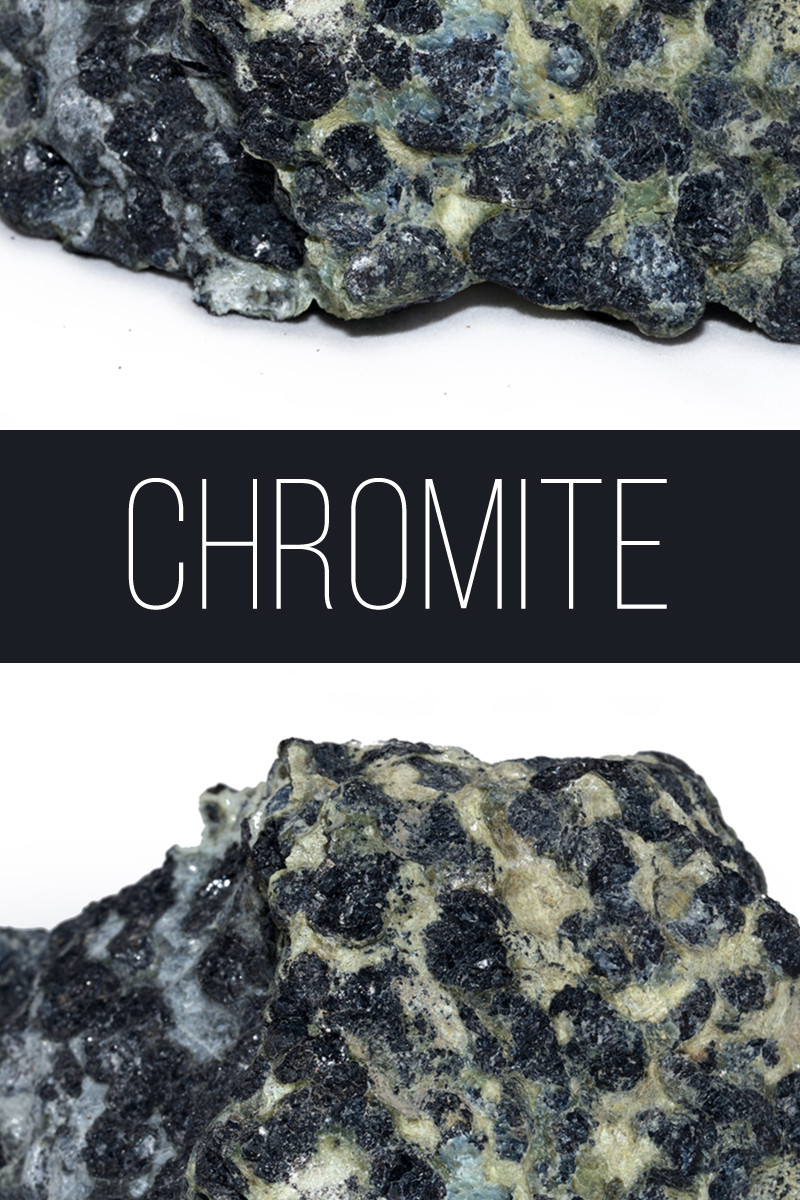 It’s easy to confuse chromite with any old rock, but this mineral is far from ordinary!
It’s easy to confuse chromite with any old rock, but this mineral is far from ordinary!
Chromite is a metallic, black to gray oxide mineral and a variety of spinel. It’s even referred to as “chrome spinel,” but we’ll stick to “chromite” for the sake of this guide.
Is chromite a rare mineral? Yes and no. Chromite itself is widely abundant, but you won’t usually find it in crystallized form. This makes chromite gemstones a bit harder to come by.
Metaphysically, chromite is considered a powerful stone of protection used for fortifying your physical, emotional, and spiritual bodies.
Curious to learn more about this understated stone?
Join us as we break down all that there is to know about what chromite is, how it forms, its meanings, uses, and more in our Chromite Gemstone Guide!
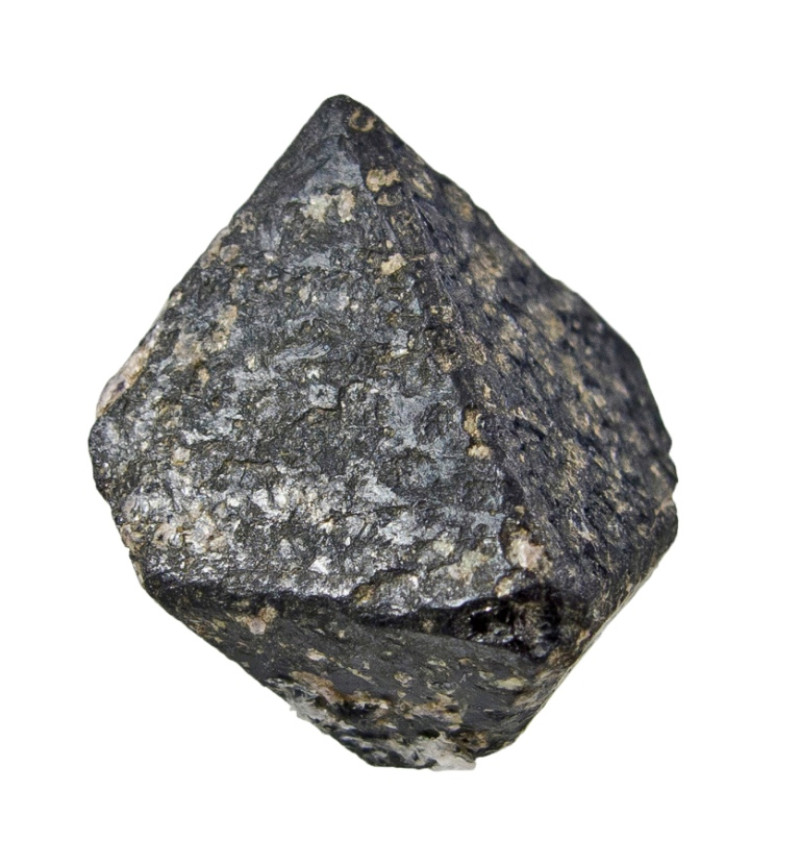 Image credit: Rob Lavinsky, iRocks.com – CC-BY-SA-3.0
Image credit: Rob Lavinsky, iRocks.com – CC-BY-SA-3.0
About Chromite Stone
Chromite is the only economic ore of chromium, an important element for many industrial uses. In fact, that’s how chromite got its name! It’s also derived from Greek chroma, meaning “color.”
So what kind of industrial uses does chromite boast? It can be used:
As a ballistic modifier in defense weapons and space vehicles.
To harden and manufacture steel.
In plating to produce hard, corrosion-free surfaces.
For tanning leather.
As mordants in textiles.
For anodizing aluminum in aircraft and other industries.
To form bricks and shapes in the refractory industry.
As pigment in paint.
But that’s not all it’s known for. If you’re a fan of the cult-favorite “Final Fantasy” video game series, chromite may be ringing some bells in your head. That’s because the semi-precious gemstone appears in “Final Fantasy XIV.” Players get a chance to mine for chromite ore as they level up in the game.
Outside of Japanese sci-fi fantasy, how does one identify chromite in the real world?
Chromite Specifications & Characteristics
Chromite is a member of the spinel group, along with minerals like franklinite, gahnite, magnetite, and spinel. Crystals are usually small, forming as granules, nodules, or in a mass.
Although chromite isn’t usually magnetic, some specimens can show slight magnetism — making it easy to confuse for magnetite. Knowing what to observe in terms of hardness, streak, and density are necessary to tell hand specimens apart.
Here’s an overview of chromite’s mineral data:
Chromite formula: FeCr2O4
Mineral family: Spinel group
Composition: Chromium, iron, oxygen
Mohs hardness: 5.5 to 6
Color: Dark gray to black, reddish brown, rarely brownish black
Crystal structure: Isometric
Luster: Metallic to submetallic
Transparency: Translucent to opaque
Refractive index: 2.08 to 2.16
Density: 4.0 to 5.1
Cleavage: None
Fracture: Conchoidal
Tenacity: Brittle
Streak: Dark brown
Luminescence: None
Pleochroism: None
Treatments: Naturally untreated but can be heat-treated
How many different kinds of chromite are there, anyway?
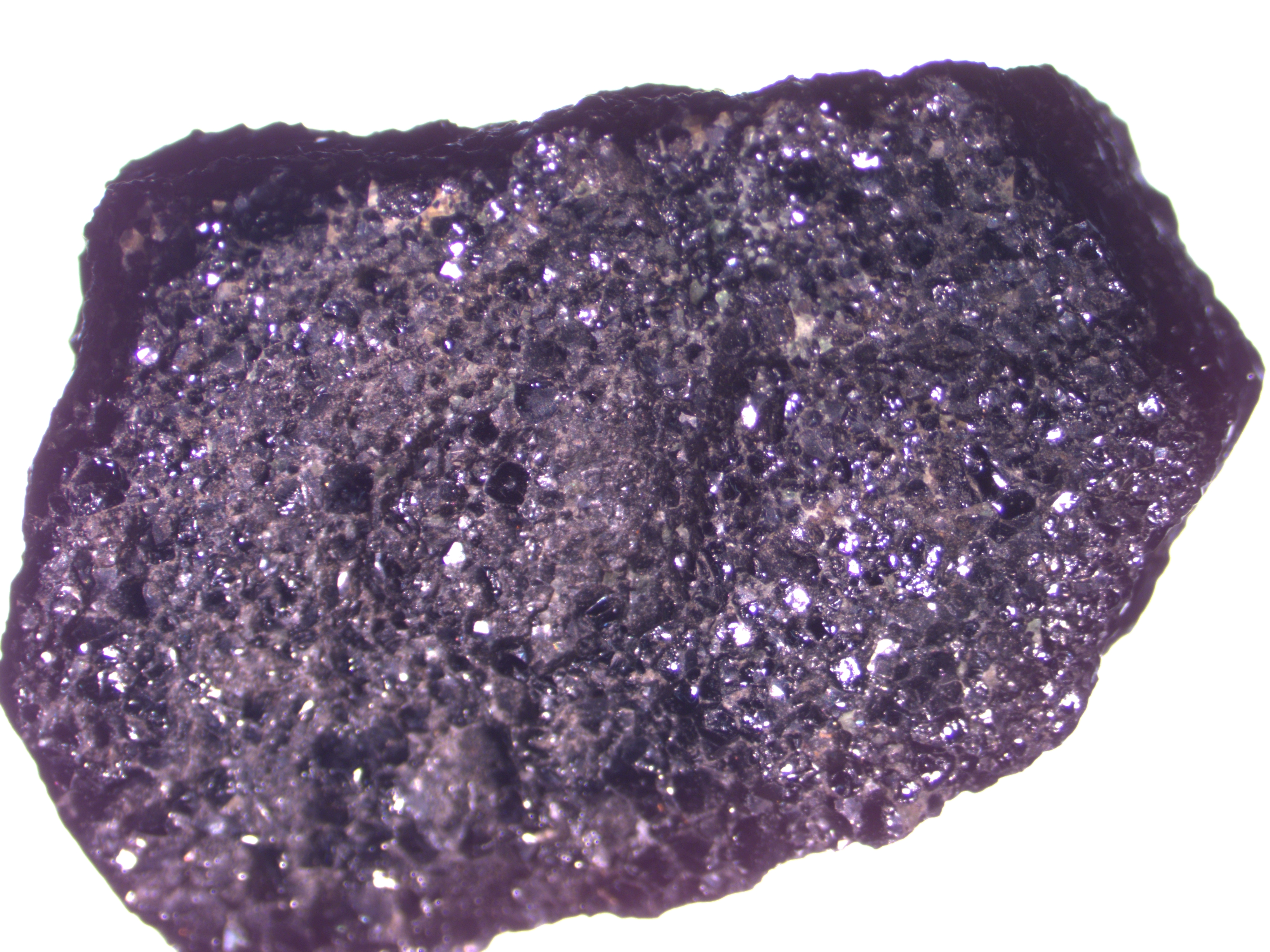 Image credit: Northwestern University
Image credit: Northwestern University
Types of Chromite
Chromite has a few varieties differing primarily in composition:
Aluminum Chromite
This is an aluminum variety of chromite in the chromite-hercynite series.
Alumoberezovite
Alumoberezovite is a magnesian aluminian chromite.
Berezovskite
Berezovskite is a magnesian variety of chromite found mainly in Germany.
Ferrian Chromite
This is a ferrian variety of chromite within the chromite-magnetite series.
Leopardenerz
Leopardenerz is a variety that displays leopard-like chromite patches in a brighter matrix.
Titaniferous Chromite
This is a titanium-bearing chromite variety found mainly in France.
Chromite varieties? Check! Next up, history!
Image credit: Geologicharka | Creative Commons Attribution-Share Alike 3.0 Unported license
Chromite History
Chromite was officially discovered in 1845 in France by Austrian mineralogist Wilhelm Karl Ritter von Haidinger. He named the mineral for its chromium content.
Although the mineral is cited as having been discovered in 1845, it was actually described a few decades prior. In 1798, P. Meder named it chromian-säure eisen (German for “chromic acid iron”) and wrote about finding the mineral along river banks in Northern Russia.
Over time, chromite has been known by a few different names, such as:
Chromian-säure eisen (early 1798)
Eisenchrom (late 1798)
Fer chromaté aluminé (1800)
Chromeisenstein (1832)
Siderochrome (1841)
Chromoferrite (1843)
Finally, in 1844, the mineral garnered its final name change. Since then, we’ve recognized it as “chromite.”
With regards to healing, what is special about chromite?
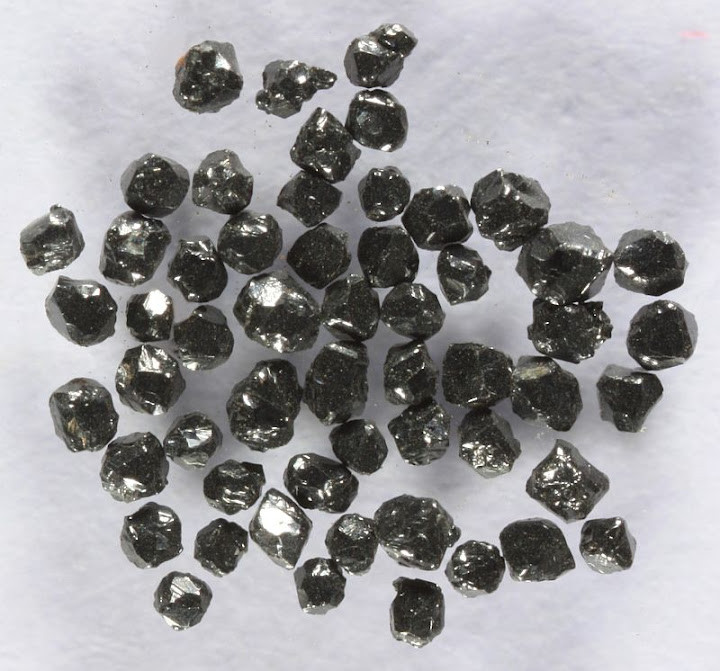 Pictured above: Crystals picked out of a chromite concentrate from the Rustenburg mine, Western Bushveld, South Africa | Image credit: Sandatlas
Pictured above: Crystals picked out of a chromite concentrate from the Rustenburg mine, Western Bushveld, South Africa | Image credit: Sandatlas
Chromite Healing Properties
Most gems have specific characteristics allowing crystal healers to use them as healing stones to support overall wellness.
Like other black and brown gemstones, the chromite crystal’s meaning is one of protection, grounding, and balance. Its vibrations are said to fortify your physical, emotional, and spiritual bodies on a deeper level.
First, let’s see how chromite can support your physical wellbeing.
Physical Healing
Chromite supports your physical wellness on a cellular level by purportedly helping your body absorb nutrients, mainly vitamins A and D.
It’s also thought to treat eye disorders and alleviate lung problems.
Emotionally, what is chromite used for?
Emotional Healing
Do you tend to jump the gun? Maybe you let your impulses get the best of you sometimes. If so, chromite can foster a state of non-reaction to unpleasant or stressful situations.
Chromite doesn’t make you apathetic, though. Instead, it brings you a deeper awareness and enhances your perceptiveness. This way, you’re better equipped to make wise decisions based on logic and strategy instead of letting your emotions take the driver’s seat.
Chakra Healing
Chakra stones are crystals that help activate and balance your chakras or energy points along the center of your body.
Like spinel, chromite uses its vibrations to balance your root chakra. You can find this chakra at the base of your spine. As the name implies, this chakra roots your body and soul to the earth. It’s responsible for governing your survival, instincts, and stability.
As a powerful grounding stone, chromite stabilizes your chakral root — centering you, calming you, and making you feel safer. In turn, it allows you to focus on personal growth, boosting your quality of life.
What is the value of chromite? That depends on grading!
 Image credit: John Sobolewski (JSS)
Image credit: John Sobolewski (JSS)
Chromite Gemstone Properties
Every gem has characteristics that help experts determine what they’re worth. The chromite properties experts assess to determine its value are color, cut, and size.
Color
Most chromite is black to gray, but some specimens can also appear reddish-brown to brown. This is a result of their iron-oxide composition.
Inclusions within the mineral, like serpentine, calcite, or olivine, can alter chromite’s color and luster.
With chromite, the more metallic a specimen is, the more sought-after and valuable it becomes.
Cut
Chromite is mainly sold rough (or uncut), which is also its most affordable form.
The mineral’s metallic, black appearance makes for some interesting gemstones. It can be faceted into popular gemstone shapes like round, oval, octagon, or trillion-cuts.
Along with cabochons, chromite is mostly cut for collective purposes only. However, because of its abundance, cut gems tend to be quite inexpensive compared to other minerals on the market.
Size
Chromite is widely abundant, with many deposits producing large specimens. As a result, finding large chromite specimens isn’t hard. These large pieces are also sold at very accessible prices.
Crystal-quality specimens aren’t as easy to come by, earning them higher prices (especially for larger-sized crystals).
But before chromite makes it to grading, it first has to form, of course!
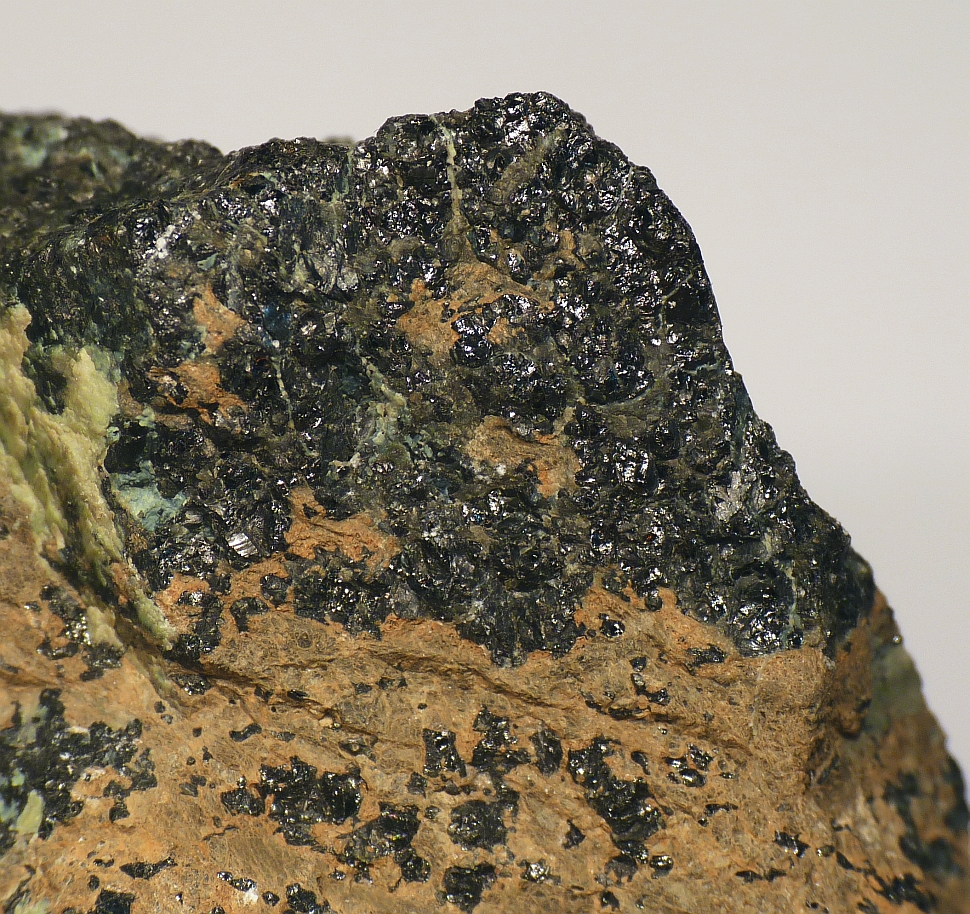 Image credit: Leon Hupperichs
Image credit: Leon Hupperichs
Chromite Formation & Sources
It takes a little magmatic action to form chromite — usually alongside other minerals like magnetite or dolomite.
Chromite is one of the first minerals to crystallize in ultramafic magmas. It typically occurs in olivine-rich igneous rocks and serpentinized rocks (formed by the transformation of igneous rocks).
Chromite is resistant to weathering; therefore, it’s often distributed in alluvial placers (gravel or sand deposits within lakes or river beds). However, in localities where temperatures are very high, the mineral is oxidized and destroyed.
Geographically, where is chromite found?
Mining Locations
There are chromite localities scattered all over the world. The largest deposit is found in South Africa. Other well-known localities include:
Canada
Cuba
France
India
Norway
Philippines
Russia
Turkey
United States (sparingly)
…to name a few.
Some chromites even have interstellar roots. It’s been found in meteorites, asteroids, and on the moon! Far out, right?
Ready to add some chromite to your crystal collection? Let’s see how much this curious mineral costs.
 Image credit: IbrZulya | Creative Commons Attribution-Share Alike 4.0 International license
Image credit: IbrZulya | Creative Commons Attribution-Share Alike 4.0 International license
Chromite Stone Price & Value
Fortunately, thanks to chromite’s abundance, stones are fairly affordable — especially in comparison to more popular gems.
Rough chromite is usually the most common form of the mineral you’ll find sold. Rough chromite price per gram ranges between $0.04 to $0.06. High-quality specimens can garner as much as $0.19 per gram.
Faceted chromite fetches higher prices, costing around $10 to $20 per carat. Some higher-end pieces can cost as much as $59 per carat.
Chromite carvings and chromite cut en cabochon are mostly sold as curiosities with little special attraction, so prices will vary by individual seller.
In jewelry, chromite is more often used as a master alloy than a gem. Instead, jewelry-makers use it to coat metal and keep it from rusting. Well-formed crystals are rare, making chromite jewelry hard to find. However, it does exist — you’ll just have to do some hunting!
If you’re lucky enough to find chromite jewelry for sale, prices can vary. Chromite rings generally retail for about $30 to $125. Prices increase depending on what kinds of metal and gems are incorporated within the designs. The same goes for bracelets and necklaces.
Now that you have a better idea of what chromite is worth, it’s time to master caring for your gemstones!
Chromite Care and Maintenance
With a hardness of about 6 on the Mohs scale, chromite is a fairly durable gem, but some attention to care is necessary to maintain its appearance.
Firstly, you’ll want to avoid high heat and store it in a cool, dry place. This is because high temperatures can cause chromite’s color and luster to fade.
Opt for chromite jewelry with protective settings, and be sure to remove it before partaking in impact-prone or rigorous activities, like washing dishes or exercising.
When cleaning your chromite, use mild soap, water, and a soft-bristled brush or non-abrasive rag. Make sure you remove all soapy residue and dry it thoroughly before storing your chromite.
Declutter Your Mind with Chromite!
Finding your center in times of uncertainty is never easy. Perhaps chromite can be your eye in the storm of it all — bringing you perseverance, serenity, and insight when you need it most.
Even if you’re living on Easy Street, chromite’s dark, metallic appearance makes it a unique and otherworldly addition to any crystal display.
Ready to make a home for it in your gem collection?
Search the Gemstone Encyclopedia
Related Auctions
Related Articles
Originally the Birthstones or gemstones were associated with a zodiac sign or the month of a individuals birth. Find out what your stone is and view the stones we have for sale
8th Feb 2021
There are dozens of quartz and chalcedony gems with various colors and patterns. Learn all about quartz properties and every type of quartz, from amethyst and agate to plasma and phantom quartz!
15th Oct 2020
Hackmanite is a pink to violet sodalite gem known for its unique color-change and luminescence. Learn why hackmanite is special, from its rare qualities to the types of hackmanite jewelry available.
28th Mar 2018
Latest Articles
Yugawaralite is a rare colorless, white, or pinkish zeolite crystal named for its discovery in Yugawara, Japan. Here we uncover the multifaceted history, properties, prices, and uses of yugawaralite.
24th Mar 2025
Simpsonite is a lesser-known mineral known on the gem market for its durability, yellow-orange color, and rarity. Discover all the properties, uses, prices, and history of simpsonite.
3rd Mar 2025
Kurnakovite is a colorless crystal related to inderite and rarely faceted but known among collectors. Explore the mineral traits, history, prices, and more in this kurnakovite guide.
17th Feb 2025
Article Categories
How To's is where you will find helpful articles from gem Rock Auctions on how to cut gemstones, select gemstones and buy gemstones.
9 Articles




